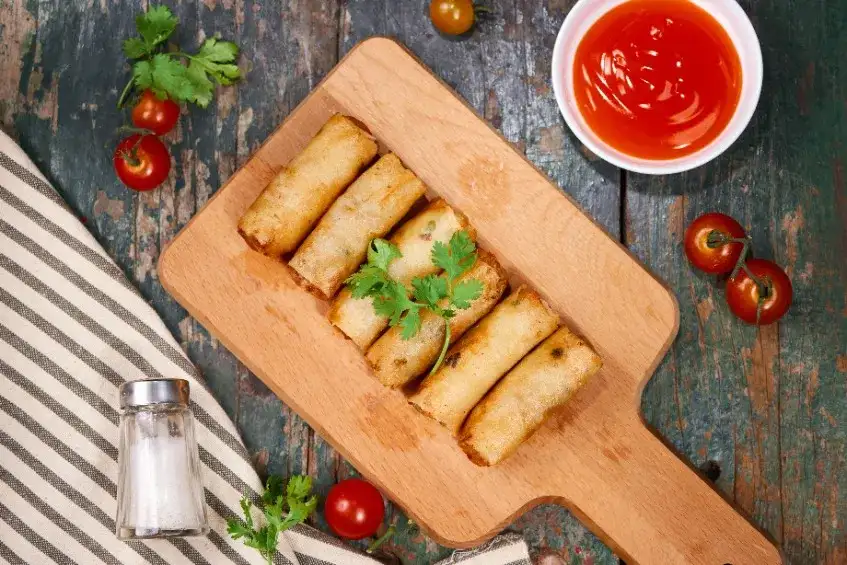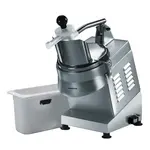
Spring Roll vs. Egg Roll vs. Summer Roll: What Makes Them Different from the Other?
Whether you use thin, thick, or uncooked wrapping papers, the delight of fresh and cooked vegetables rolled up and served with sauce is just irresistible. Spring rolls, egg rolls, and summer rolls are some of the most popular offerings of East Asian cuisine to the world, allowing us all to experience both crunchy and soft textures through the same class of dishes. While they might have similar names and even belong to the same category of appetizers, these dishes are distinct.
Offering these delicious appetizers can drive forward your sales and entice customers to buy more drinks to go with these mild, yet savory offerings. In this article, we help you understand the differences between a spring roll vs. egg roll and spring rolls vs. summer rolls to help you offer these East Asian delights at your establishment and make the best of each dish. We also discuss how many calories are in an egg roll as opposed to the number in spring rolls to help you market to the more health-conscious customers on your list. Read on to know more!
Some Background on Spring Rolls, Egg Rolls & Summer Rolls
- To better understand the difference between spring rolls, egg rolls, and summer rolls, it’s important to know the background of these dishes.
Spring rolls find their origin in China, and have a history spanning over 1700 years. These dishes were prepared as a seasonal delicacy from the times of the Eastern Jin dynasty that ruled parts of China between 265 CE to 420 CE. The dish primarily consisted of vegetables and was prepared during springtime - a season that coincides with the Chinese new year. The biting winters in the region meant vegetables from the previous summer would have to be preserved to last throughout the season. However, the arrival of spring meant the availability of fresh vegetables used to make a thin pancake-like dish. Though markedly distinct from the modern spring roll, this version is considered to be the oldest take on the dish. By the time of the Ming dynasty, however, chefs had begun rolling the pancakes to make a roll - a variant closer to the modern spring roll.
- An important difference between the egg roll vs. spring roll is that the egg roll is considered an optimized recipe for the American populace.
It is a mixture of both American and Chinese culinary traditions and incorporates more meat-based ingredients in the filling. The dish is also more chewy and crispy, making it a more interesting dish that offers more textures to the consumer. While the spring rolls’ history stretches back to the annals of imperial China, egg rolls are relatively recent and find their origins in the initial waves of immigration of the Chinese community into the United States. Despite the many theories surrounding the origin of egg rolls, the Sino-American origin theory is most plausible for the unique dish’s development.
- As far as summer rolls are concerned, these dishes are based on the Chinese spring roll and were taken to Vietnam, Thailand, Laos, and the Philippines by Chinese immigrants in the early centuries of the common era. However, the local climate, the availability of varied ingredients, and the presence of the existing culinary traditions modified the spring roll to be a lighter, fresher offering. As opposed to the fried spring rolls that are often served hot or warm, summer rolls are served cold and contain both raw vegetables and meat. Also called Vietnamese spring rolls, several origin stories and legends are quoted for the dish, however, it is widely accepted that it is a modification of the spring roll that made inroads into these countries from their northern neighbor.
What Is a Spring Roll?
- To better understand the differences between a spring roll vs. egg roll and spring rolls vs. summer rolls beyond their origins, it’s important to delve into the specifics of these dishes and delineate the outstanding differences.
- The most significant difference between a spring roll and an egg roll is the wrapping sheet. Spring rolls have a paper-thin wheat-based wrapping sheet that crumbles easily and shatters into several flakes when chewed.
- Spring rolls are often filled with fresh vegetables such as cabbage, bamboo shoots, mushroom, carrots, and scallions. These are cooked lightly, just until the point where they’re soft enough, yet retain the characteristic crunch to further diversify the texture profile of the dish.
- While spring rolls are a singular dish finding origin in China, since the nation is large and diverse, the dish has various regional takes. Alongside vegetarian spring rolls, it is also common to find recipes that incorporate a healthy amount of meat like pork and shrimp in the filling.
- An important difference between egg roll wrappers vs. spring roll wrappers is that the latter is extremely light and is prepared by painting a thin layer of flour, water, & oil slurry on a hot wok.
- The cooked vegetable mixture is then added to the sheet and rolled. Following this, the roll is fried in hot oil until golden brown.
- If you’re concerned about how many calories there are in a spring roll or about fresh spring roll calories, about 64 grams of the dish contains 148 calories.
- Spring rolls are usually served with rich, savory, and even umami dipping sauces that engage more taste buds and enhance the experience.
What Is an Egg Roll?
- An essential egg roll vs. spring roll difference is the thickness of the wrapping paper. While egg roll wrappers are also made of wheat flour, they contain eggs, providing an added component of thickness to the batter.
- When considering the main difference between egg roll wrappers vs. spring roll wrappers, the feature that stands out the most is the doughiness of the egg roll wrapper. The frying process adds bubbles to the wrapper surface which makes the dish all the more enjoyable.
- They have a higher quantity of filling when compared to spring rolls, and the filling is made of both cooked vegetables and meat. However, meat fillings are more prevalent in egg roll varieties.
- Vegetarian options are usually made of cooked cabbage, carrots, and scallions, whereas ground pork and beef are some meat-filling options available to chefs.
- Like spring rolls, egg rolls also have regional variations that make the dish open to experimenting with different filling combinations.
- Egg rolls in the southern parts of the US often come with black beans, corn, and rice filling. Cheese, eggs, and turnip greens are also popular filling combinations that find a lot of takers.
- Egg rolls can be served with hoisin sauce, sriracha sauce, or spicy chili sauce. These combinations make the egg roll more complex to the palate.
- If you’re wondering how many calories are there in an egg roll, egg rolls weigh in a bit heavier on the calories when compared to their counterparts. A single serving of an egg roll weighing 89 grams contains about 223 calories.
What Is a Summer Roll?
- Summer rolls, unlike spring rolls and egg rolls, are served cold, making them perfect for the hot summer months.
- As opposed to the wheat-based wrapping papers of both spring and egg rolls, summer rolls are wrapped with rice wrappers.
- Rice wrappers are available either in square or circular shapes in the market and are the ideal choice for preparing summer rolls due to their light, yet chewy texture.
- Summer rolls are also called Vietnamese spring rolls, fresh spring rolls, and salad rolls.
- The main difference between spring rolls vs. summer rolls is the inclusion of fresh, often uncooked vegetables in the filling.
- Summer rolls also contain a healthy addition of meat in their fillings. The preferred meat of choice is pork.
- Other filling options include glass noodles, herbs, peanuts, rice, lettuce, cucumber, and shrimp.
- Wrapped summer rolls do not need to be cooked, and the rice wrapper can merely be soaked in warm water to make it pliable for rolling.
- As the wrapper dries, it becomes more adherent to the filling and is easier to stick and seal.
- Summer rolls are best served with peanut-based dipping sauce or with hoisin sauce.
- Summer rolls are much lighter when compared to spring or egg rolls. A serving of a summer roll weighing 72 grams contains around 85 calories on average.
- While summer rolls are often served uncooked, there also exists a fried variation of this delicacy. Fried summer rolls have a crispy outer shell, similar to the conventional spring roll.
- However, the fried summer roll has an even crispier texture when compared to the spring roll due to the rice paper in the former.
- Irrespective of the variation, the usage of fresh ingredients is key to preparing a delicious summer roll. The blend of fresh ingredients with the delicate, yet complex rice paper brings about a balanced dish that is perfect for both taste and health.
The Takeaway
While there are several differences between spring rolls, egg rolls, and summer rolls, all of these dishes are customer favorites that can make for great appetizers and even small plates! Consider adding them to your menu to reap the benefits of providing light, fresh & savory dishes loaded with texture. You can also incorporate these offerings into your menu to diversify your set of offerings and include customers with a wider range of preferences in your list of patrons.




